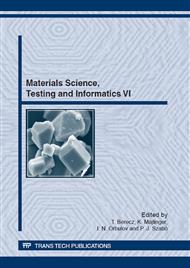p.68
p.74
p.80
p.85
p.91
p.97
p.103
p.109
p.114
Examination of Aluminium Based Automotive Casting
Abstract:
Automotive castings have to meet more and more versatile requirements these days. One of the most important requirements towards suppliers and foundries is producing parts of better quality, higher performance but at the same time of less weight. In order to couple this small weight with high performance and excellent quality these products should meet very strict mechanical standards of automotive parts. There is a constant need for production engineering developments ranging from purity degree - that is producing molten metal with high cleanness - to grain refinement and alloy improving including heat treatment technologies.
Info:
Periodical:
Pages:
91-96
Citation:
Online since:
November 2012
Authors:
Price:
Сopyright:
© 2013 Trans Tech Publications Ltd. All Rights Reserved
Share:
Citation:


